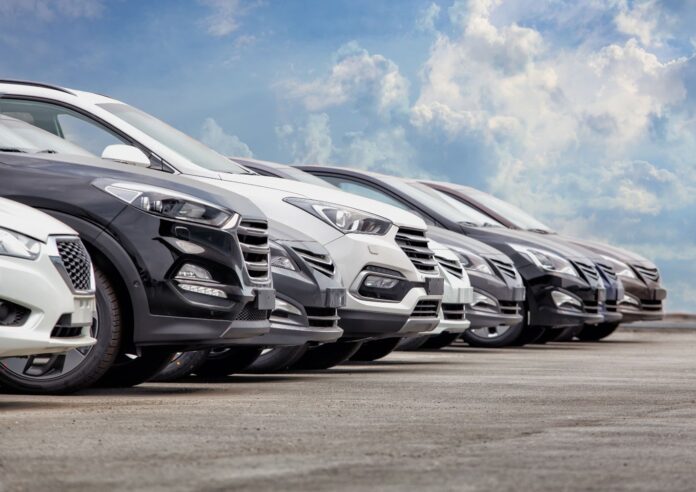Automotive innovation no longer begins with metal or ends with horsepower. Somewhere between the digitization of manufacturing and the rise of electrification, a quiet shift has taken hold – one that’s changing not only how vehicles operate, but how they’re designed, maintained, and experienced.
Louie Valdez of Thousand Oaks, CA, emphasizes that software is now central. And it’s no longer in the background.
These days, a car isn’t defined by how it moves physically but by how it acts online. In fact, many of the best features on today’s cars don’t come with the car when it’s bought; they come wirelessly through regular updates.
This shift from mechanical dominance to digital intelligence is not sudden, but it has gradually grown over a period of time. Needless to say, it is already influencing the competitive landscape across automakers, redefining the relationship between drivers and their vehicles.
Louie Valdez of Thousand Oaks, CA, who closely tracks market behavior and technological shifts across the automotive sector, describes it this way: automakers once competed on steel and styling. Now, they’re competing on software architecture.
The Architecture Behind the Shift
In traditional vehicles, dozens of separate control units work together at the same time. There are different ones for the engine, entertainment, lighting, temperature control, and safety systems. Most of the time, Louie Valdez of Thousand Oaks, CA, explains that these are hardcoded, which means that changes or improvements need to be done at the store, or they can’t be done at all.
Today’s software-defined vehicles (SDVs) operate differently. They consolidate computing functions into centralized systems capable of dynamic, over-the-air updates. This allows manufacturers to correct flaws, introduce features, or optimize performance long after the vehicle is sold.
For customers, this means a car that gets better over time without ever having to go to a service bay. It gives producers a new way to connect with customers, make their products stand out, and create long-term value.
As Louie Valdez of Thousand Oaks, CA says that the most important innovations in the space today are happening in firmware updates and connectivity layers. She also firmly believes this is just the beginning and the industry has a lot more to offer.
The Business Model Is Changing With It
This change isn’t just happening in tech. It’s also changing how the industry makes money.
A lot of automakers are now treating their vehicles as software platforms, transforming them into newer revenue opportunities. From navigation subscriptions to advanced driver assistance, the vehicle itself becomes the foundation for ongoing, post-sale monetization.
Some automakers are also adding subscriptions for extra features like heated seats, speed tuning, or personalization tools inside the car that can be turned on or off with a software order.
Consumers are naturally skeptical about what should be seen as an extra service and what should be seen as a normal feature. But the main trend is clear: cars are becoming more of an experience rather than just a piece of gear.
Louie Valdez of Thousand Oaks, CA continues to believe that the subscription model would only work if it’s transparent about what it’s providing. He also says that drivers are willing to pay for improvements but they wouldn’t agree to pay for something that should have been built from the start, and that makes for a fair point.
The Role of the Dealership Is Evolving Too
As vehicles shift toward software-first systems, the role of dealerships, particularly in service and support, will also face new expectations and undergo changes.
More and more diagnostic work is being done digitally. Some problems can be found and fixed from afar. Others need program patches instead of repairs to their machines. This requires service workers to know more about technology and changes the standard idea of “vehicle maintenance” into a mix of hardware and IT.
As someone who knows about this in detail, Louie Valdez of Thousand Oaks, CA, states that the service center is no longer just a place to rotate tires and replace fluids. In fact, he goes ahead to say that it’s a place to interface with data, interpret logs, and manage software configurations.
Regulation, Privacy, and Security Will Take Center Stage
As code becomes more important to how vehicles work, issues of duty, privacy, and digital safety become more important. Who owns the information that a linked car gathers? Why is that info protected, and where is it kept? What happens if an over-the-air update makes the car less safe?
These are not minor issues; they are at the heart of the talk about trust, responsibility, and following the rules. And the government is starting to pay attention.
Louie Valdez of Thousand Oaks, CA, puts forward his concern, saying that software in vehicles brings incredible functionality, but it also introduces permanent exposure. That risk must be acknowledged, monitored, and managed continuously.
From the General Data Protection Regulation (GDPR) in Europe to new laws in the U.S. about driver data, the laws that govern car communication are becoming clearer. Automakers will have to take an active role in not only designing products but also in shaping government and policy.
The Final Verdict
The industry is constantly evolving, so the shift from chrome to code isn’t surprising in the slightest. It’s the fundamental redefinition of what a vehicle is and how it has to operate to stay relevant.
This doesn’t mean the mechanical foundations of the automobile are no longer important. But it does mean they are no longer sufficient on their own.
So, as Louie Valdez of Thousand Oaks, CA, rightly says, for those paying attention, that future has already arrived.v


